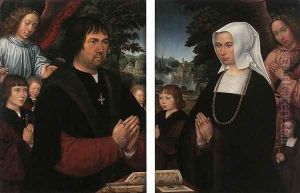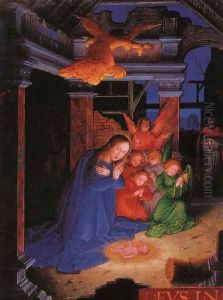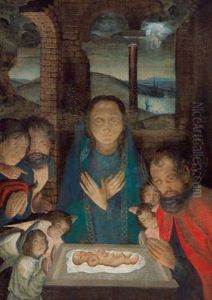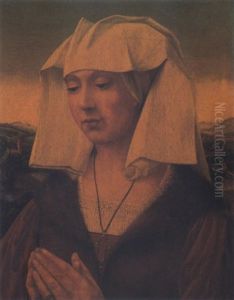Gerard Horenbout Paintings
Gerard Horenbout was a pivotal figure in the transition from manuscript illumination to panel painting in Northern Europe, particularly in the early 16th century. Born around 1465 in Ghent, he was active during a time when the cities of the Southern Netherlands, including Ghent and Bruges, were bustling centers of artistic innovation and production.
Horenbout is often regarded as the head of a family workshop that significantly influenced the development of the Ghent-Bruges school of manuscript illumination. His work is characterized by a refined use of color and a delicate handling of detail, which contributed to the narrative and decorative aspects of his illuminations. He was a contemporary of, and sometimes confused with, Gerard David, another leading painter of the time.
In 1487, Horenbout acquired the status of a master painter in the Guild of Saint Luke in Ghent. This guild was an association of artists, and being a master within it signified a high level of respect and recognition. His reputation as an illuminator grew, and he received commissions from the local elite as well as from abroad. Among his most famous works are the illustrations for the 'Ghent Privileges', a manuscript that contained the rights and privileges of the city of Ghent.
Gerard Horenbout's influence extended beyond his lifetime through his children, Lucas and Susanna, who were also accomplished artists. Lucas Horenbout is credited with bringing the traditions of Netherlandish illumination to England, where he served as a court painter to King Henry VIII. Gerard’s work and the continued influence of his children bridged the gap between late Gothic and Renaissance styles.
Horenbout’s death in 1541 marked the end of an era for the manuscript illumination tradition in the Low Countries. By this time, the printed book was becoming increasingly popular, leading to a decline in the demand for hand-illuminated texts. However, Gerard Horenbout's legacy lived on not only through his children but also through the lasting impact of his work on the art of painting in Northern Europe.



